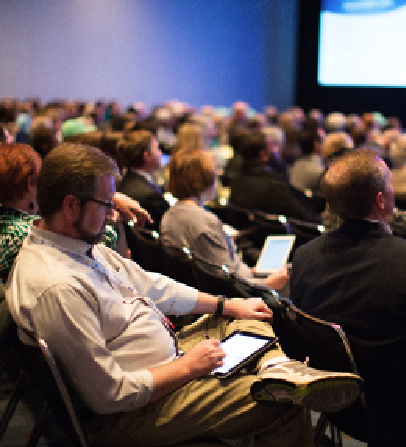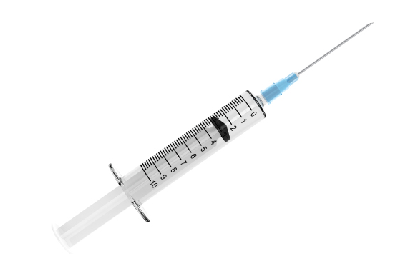APMA To Partner With Pedorthic Footcare Association At 2015 Annual Meeting
APMA To Partner With Pedorthic Footcare Association At 2015 Annual Meeting
By Brian McCurdy, Managing Editor
 Next year, the American Podiatric Medical Association (APMA) will enter a pilot relationship with the Pedorthic Footcare Association, under which the pedorthist group will hold its 2015 annual symposium in conjunction with the APMA Annual Scientific Meeting in Orlando.
Next year, the American Podiatric Medical Association (APMA) will enter a pilot relationship with the Pedorthic Footcare Association, under which the pedorthist group will hold its 2015 annual symposium in conjunction with the APMA Annual Scientific Meeting in Orlando.
The CPed track will be different from the DPM track and CPeds would not get podiatry credits, according to Dennis R. Frisch, DPM, a member of the APMA Board of Trustees and Chairman of the Annual Meeting Committee. He notes that assistants, pedorthists and podiatrists will interact during shared plenary, breakfast and other sessions as well as in the combined exhibit hall. Dr. Frisch emphasizes that the APMA will have final authority over the educational content of its pedorthic track as it does over its assistants’ track.
“Many APMA member podiatrists work closely with pedorthists to provide properly fitted and modified footwear and orthotics as a complement to the medical care podiatrists provide for patients,” says Dr. Frisch. “Podiatrists are one of pedorthists’ largest sources of referrals and many pedorthists are employed by podiatrists.”
Dr. Frisch also notes that the Dr. William M. Scholl College of Podiatric Medicine at Rosalind Franklin University of Medicine and Science and the Temple University School of Podiatric Medicine already recognize the trend toward collaborative care and offer educational opportunities for pedorthists.
At the national meeting, Dr. Frisch says both podiatrists and pedorthists will have the benefit of an expanded networking pool. He notes the meeting attracts podiatric physicians, assistants and other healthcare professionals, and pedorthists have always been welcome to attend. Dr. Frisch also says DPMs will have an opportunity to interact with pedorthic companies that they may not have otherwise seen in the exhibit hall.
Robert S. Steinberg, DPM, criticizes the decision, saying the general APMA membership did not decide to engage in the pilot relationship with the Pedorthic Footcare Association. While the decision may raise exhibitor participation from companies that never went to the APMA national meeting before, Dr. Steinberg says the decision does not benefit APMA members.
“This helps the APMA coffers but does nothing for its members. This is also a stab in the back for all those orthotic labs that have supported podiatry by exhibiting,” says Dr. Steinberg, a member of the American College of Lower Extremity Surgeons, who practices in Schaumburg, IL.
James McGuire, DPM, CPed, supports the decision. He says having different professionals together “makes for a better meeting. I think meeting synergy is a great idea.”
Dr. McGuire, who has been a Medical Advisor to the Pedorthic Footcare Association for the past three years, says CPeds are a source of referrals for podiatrists and the two groups have a close working relationship. Dr. Frisch concurs that many DPMs rely increasingly on paraprofessionals like pedorthists to support their practices.
“Our relationship with pedorthists is much like the relationship among ophthalmologists, optometrists and opticians,” claims Dr. Frisch. “Many work closely together and their specialty supports educational meetings that cater to the needs of a variety of providers.”
Dr. Steinberg disputes the notion that podiatrists have a collaborative relationship with CPeds, feeling pedorthists are the only ones seeking referrals. He warns against the idea of the podiatry profession “abandoning” foot orthotic therapy and giving it over to pedorthists. Dr. Steinberg also cautions against inviting other healthcare professionals to meetings, saying it may “dilute” podiatry and leave it to “unqualified interlopers.”
“If you are providing great services to your patients, you are not going to lose them to pedorthists,” says Dr. McGuire, an Associate Professor of Podiatric Medicine and Orthopedics at the Temple University School of Podiatric Medicine.
“As podiatric physicians, we are the leading medical experts on the foot and ankle. We will serve our patients and public better by ensuring that paraprofessionals who provide services to our patients receive the appropriate and necessary education to support our care,” maintains Dr. Frisch.
Is Cryopreserved Human Amniotic Membrane As Effective As Corticosteroids For Plantar Fasciitis?
By Brian McCurdy, Managing Editor
Cryopreserved human amniotic membrane is effective and safe for plantar fasciitis in comparison with corticosteroids, according to a recent study in Foot and Ankle International.
The randomized, controlled, double-blind, single-center pilot study focused on 14 patients with plantar fasciitis using corticosteroids and nine patients using amniotic membrane. Authors noted that three patients in each group needed a second injection. The study concluded that there was no statistically significant difference in the majority of outcome measurements, which included the Foot Health Status Questionnaire (FHSQ) and the Visual Analogue Scale.
 However, authors did note that the corticosteroid group had greater FHSQ shoe fit improvement at six weeks and better FHSQ general health improvement at six weeks while the patients who received cryopreserved human amniotic membrane had greater FHSQ foot pain improvement at 18 weeks in the two-injection cohort.
However, authors did note that the corticosteroid group had greater FHSQ shoe fit improvement at six weeks and better FHSQ general health improvement at six weeks while the patients who received cryopreserved human amniotic membrane had greater FHSQ foot pain improvement at 18 weeks in the two-injection cohort.
Study co-author Robert D. Santrock, MD, emphasizes that human amniotic membrane is at least as effective and trending toward being more effective than corticosteroids. He would suggest using cryopreserved human amniotic membrane for plantar fasciitis when the conservative course and steroid injections have failed, and when symptoms have persisted for at least six months.
Cryopreserved human amniotic membrane is safe and one can perform the procedure in the office, notes Dr. Santrock, an Assistant Professor and the Chief of Foot and Ankle Surgery in the Department of Orthopaedics at the Robert C. Byrd Health Sciences Center at the West Virginia School of Medicine. The only drawback is the therapy’s expense, which he says is approximately $1,500 to $2,000 and usually requires insurance pre-approval.
New Study Assesses Immediate Weightbearing After Lapidus With Ex-Fix For Severe Hallux Abductovalgus
By Brian McCurdy, Managing Editor
A new study in the Journal of Foot and Ankle Surgery notes that immediate weightbearing after a Lapidus arthrodesis with external fixation can be effective for severe hallux abductovalgus with associated hypermobility.
The authors focused on 20 Lapidus fusions in 19 patients. Their mean duration of ex-fix use was 12 weeks while the mean interval to radiographic union was 9.2 weeks in 18 of 20 feet with two nonunions, according to the study. On the Visual Analog Scale, the mean patient pain score decreased significantly from 8.2 to 0.83 postoperatively, according to the study.
Given that patients can bear weight the day after surgery, study co-author Bradley Lamm, DPM, says they are able to bathe with the applied external fixator and after removal of the ex-fix device, they do not retain any internal screws, pins or implants. He points out that surgeons can also adjust the external fixation during the postoperative course. For example, they could add more compression of the Lapidus to stimulate osseous union, according to Dr. Lamm. He does note that patients will need a second surgery for removal of the ex-fix device and that possible pin tract infections may require antibiotics, a complication that occurred in six feet in the study.
The Lapidus with external fixation is indicated for patients who choose not to be casted or have internal fixation, according to Dr. Lamm. He adds that the procedure is also for those with decreased upper body strength or injury, patients who need to keep walking/working, and those who live alone or do not have constant family/friend support.
There are some technical challenges for surgeons performing this procedure, notes Dr. Lamm, the Head of Foot and Ankle Surgery at the International Center for Limb Lengthening in Baltimore.
“Application of multiplanar external fixation is difficult as the room for error is small in this region of the foot, in addition to performing an already complex and technically demanding Lapidus procedure,” explains Dr. Lamm. “Thus, an understanding of external fixation principles and external fixation experience is critical to the success of this surgery.”
Clarification
In the New Products section of the October issue of Podiatry Today, the product description of the Super Staple Classic should have read “The implant’s greater fixation force and pull out resistance in comparison to heat activated staples reduce the incidence of fixation failure and risk of nonunion, according to the company.”











